W. D. Hutchison, P. C. Bolin, and R. L. Hines
Department of Entomology, University of Minnesota
Introduction
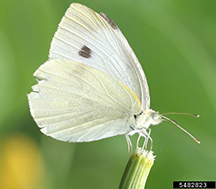
The imported cabbageworm (ICW), Pieris rapae, is commonly known as the cabbage butterfly. This butterfly was imported from Europe to Canada in the mid-1800s and has since spread to all parts of the continent. ICW rarely becomes an economic pest if controls for the other cole crop Lepidoptera (diamondback moth and cabbage looper) are being applied, and/or beneficial predators and parasites are present.
Biology & Life Cycle
Adult ICW has black-tipped forewings that span about 1½ inches. Males have 1 black spot on top of each of their forewings and females have 2. The hindwings are all white on the surface except for a black spot on the outer front margin. There is a slight yellowish hue on the underside of the wings. Adults emerge in spring and mate. Females then lay yellow, oblong, and deeply ridged length-wise eggs singly on the leaves of host plants. After 3 to 7 days, depending on temperature, the eggs hatch. Feeding on the upper leaf surface, the larvae take about 2 weeks to grow to their full 1 inch length. Larvae are velvety green in color with faint yellow stripes running longitudinally on the back and sides.
The larva (below, left) pupate in a pale green chrysalis (below, right) attached to any object in the garden or farm. Completion of the pupal stage ranges from 1 to 2 weeks. There are 3 to 5 overlapping generations throughout the growing season. Overwintering occurs in the pupal stage of the last generation.
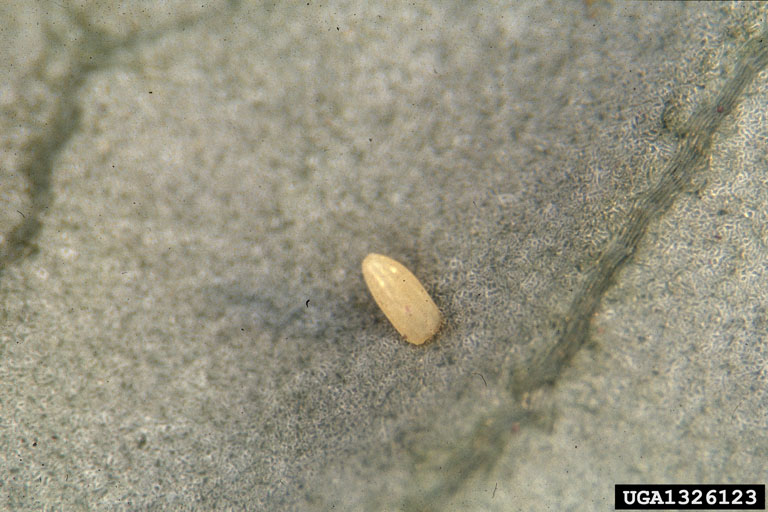
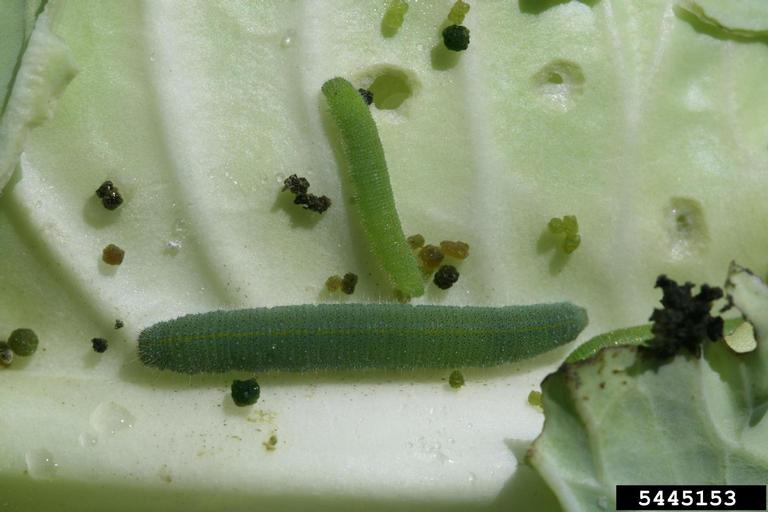
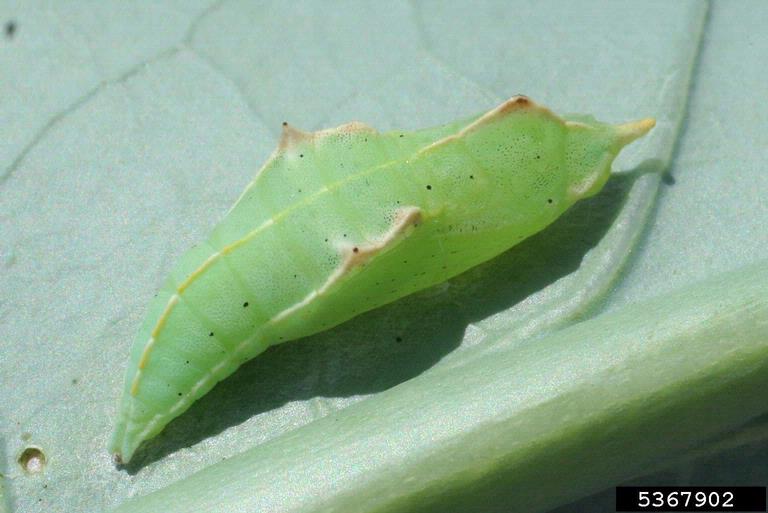
Damage
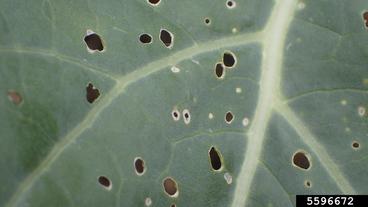
Larvae feed on the first formed outer leaves of their host plants, which often appear riddled with irregularly shaped holes. As the caterpillars become mature, they feed in the center of the plant. The 5th instar larvae does the most feeding damage. Fecal pellets can be found between the leaves. This pest also damages turnip, radish, mustard, and nasturtiums in addition to cole crops.
Management Options
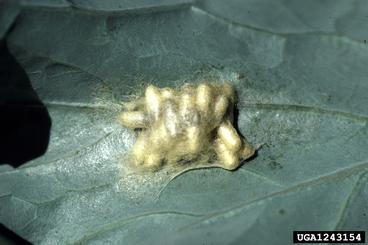
Cotesia glomerata (L.), a gregarious brachonid wasp parasite, offers variable control of the ICW. The wasp however, is not well-synchronized with the first generation of ICW and competition with hyperparasites is high. Data from south-central MN (Dakota Co.) show that parasitism of ICW typically averages 20-30%. For more information, see the Cotesia glomerata article by Dr. Susan Mahr, University of Wisconsin-Madison.
Cotesia rubecula (Marshall) is a solitary parasitic wasp that is host specific to ICW. This parasite offers a greater potential for effective control because it kills the ICW larva in the 4th-instar, before ICW does significant feeding damage. Although, C. rubecula is presently established only in Massachusetts and Southern Michigan, plans are underway to release this wasp in Minnesota.
Trichogramma spp., egg parasitoids introduced from Europe, offers the best potential for control of the ICW. Since Trichogramma develops in the egg of the ICW, feeding damage is dramatically reduced. Timely mass releases of Trichogramma, during peak flight, could be an effective control agent.
Pteromalus puparum (Linnaeus), a gregarious eulophid wasp, is a pupal parasitoid of ICW. The pupae turn brown when infected. The problem is that a pupal parasitoid does not reduce larval feeding for the current generation. However, P. puparum does contribute to overall population suppression.
Finally, Bacillus thuringiensis (Bt) applied when early instars are present, usually provides effective control of ICW. For more information, see the overview article on Bt by Dr. Rick Weinzerl and T. Henn, University of Illinois.
Action Thresholds for Bt/Insecticide Use
| 1. Where DBM is primary insect pest (usually early-season): |
|---|
| Before cupping |
| 50% plants infested with 5 or more larvae each. |
| Cupping to harvest |
| 10% plants infested with 1 or more larvae each. |
| 2. Where ICW and/or CL are primary pests (usually mid- and late-season): |
| Transplant to cupping (leaf stages only) |
| 30% plants infested with 1 or more medium-large imported cabbageworm larvae and/or 1 or more cabbage looper eggs or larvae. |
| Cupping to harvest |
| 10% plants infested with 1 or more medium-large imported cabbage worm larvae and cabbage looper eggs or larvae. |
NOTE: To ensure proper use of insecticides, refer to the most recent edition of the Midwest Vegetable Production Guide.
References
Cornell University. 2003. Vegetable Disease ID and Management http://vegetablemdonline.ppath.cornell.edu/
Growing Broccoli and Cauliflower in Minnesota (FO-1862)
Diseases of Cole Crops (MN) (FS-1169)
Commercial Vegetable Pest Management Production Guide.
Alternatives in Insect Management (IL) (BU 5854)
Biological Control of Insect Pests of Cabbage and Other Cruicifers (WI) (BU-6198)
Biological Control of Insects and Mites (BU-6428)
More information on Imported Cabbageworm from the Department of Entomology at the University of Wisconsin, Madison.